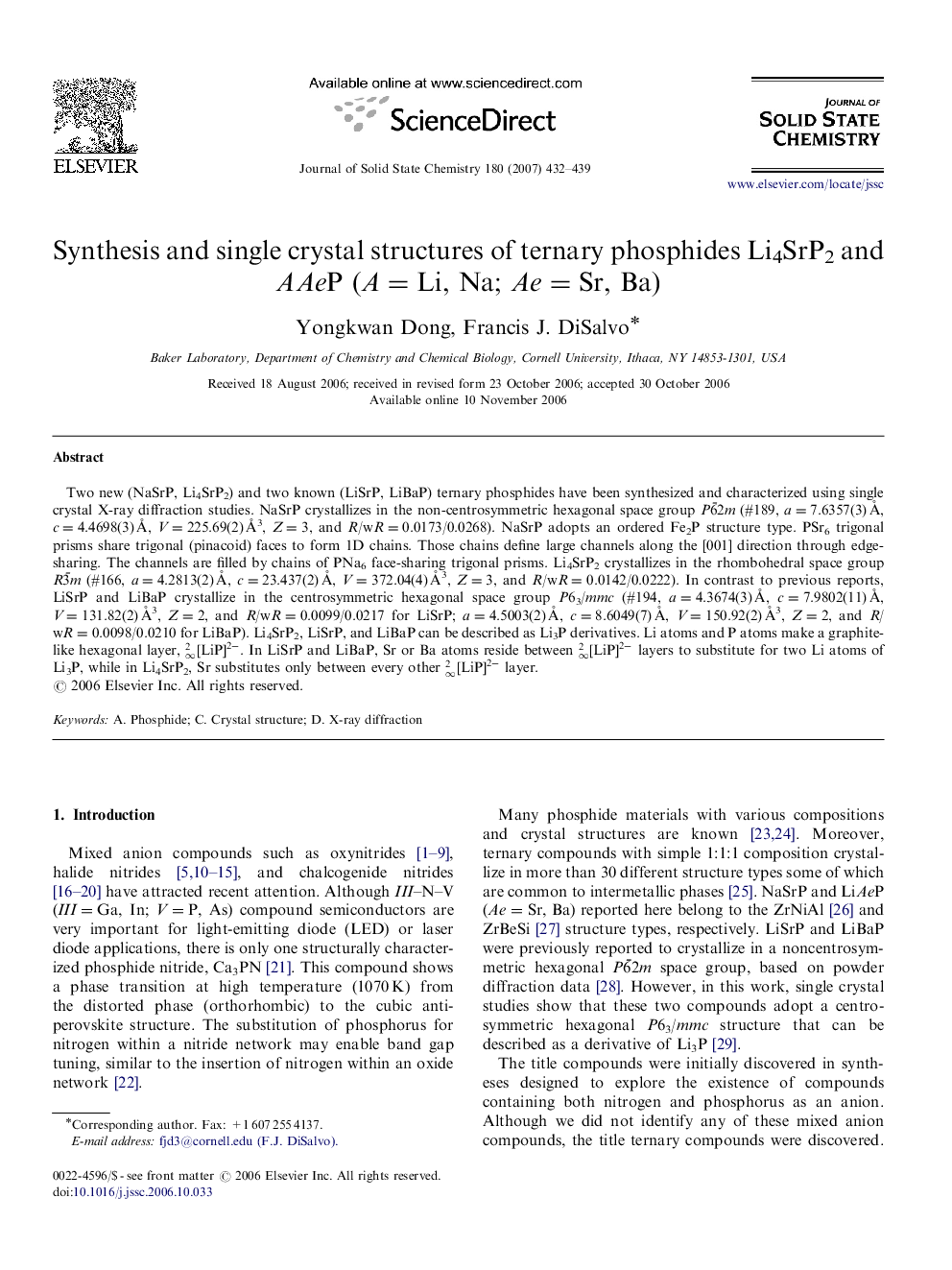| Article ID | Journal | Published Year | Pages | File Type |
|---|---|---|---|---|
| 1333403 | Journal of Solid State Chemistry | 2007 | 8 Pages |
Two new (NaSrP, Li4SrP2) and two known (LiSrP, LiBaP) ternary phosphides have been synthesized and characterized using single crystal X-ray diffraction studies. NaSrP crystallizes in the non-centrosymmetric hexagonal space group P6¯2m (#189, a=7.6357(3) Å, c=4.4698(3) Å, V=225.69(2) Å3, Z=3, and R/wR=0.0173/0.0268). NaSrP adopts an ordered Fe2P structure type. PSr6 trigonal prisms share trigonal (pinacoid) faces to form 1D chains. Those chains define large channels along the [001] direction through edge-sharing. The channels are filled by chains of PNa6 face-sharing trigonal prisms. Li4SrP2 crystallizes in the rhombohedral space group R3¯m (#166, a=4.2813(2) Å, c=23.437(2) Å, V=372.04(4) Å3, Z=3, and R/wR=0.0142/0.0222). In contrast to previous reports, LiSrP and LiBaP crystallize in the centrosymmetric hexagonal space group P63/mmc (#194, a=4.3674(3) Å, c=7.9802(11) Å, V=131.82(2) Å3, Z=2, and R/wR=0.0099/0.0217 for LiSrP; a=4.5003(2) Å, c=8.6049(7) Å, V=150.92(2) Å3, Z=2, and R/wR=0.0098/0.0210 for LiBaP). Li4SrP2, LiSrP, and LiBaP can be described as Li3P derivatives. Li atoms and P atoms make a graphite-like hexagonal layer, ∞2[LiP]2-. In LiSrP and LiBaP, Sr or Ba atoms reside between ∞2[LiP]2- layers to substitute for two Li atoms of Li3P, while in Li4SrP2, Sr substitutes only between every other ∞2[LiP]2- layer.
Graphical abstractComparison of the unit cell parameters and anionic interlayer distances between Li3P and LiAeP (Ae=Sr, Ba). (□: a-axis, ■: c-axis, ○: unit cell volume, ▿: interlayer distance).Figure optionsDownload full-size imageDownload as PowerPoint slide
